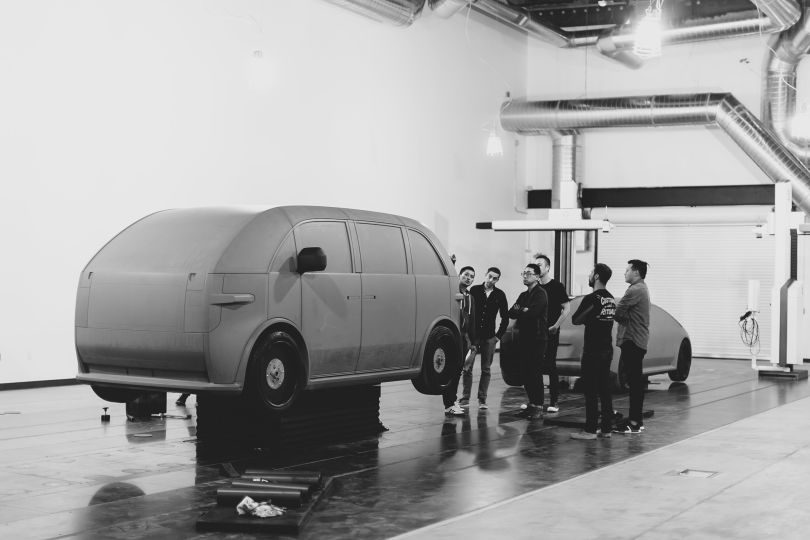Boredom in the workplace is dangerous. Akin to burnout, boredom happens when employees feel they’ve plateaued in their position, yet are settled enough that they’re unmotivated to make changes. A survey of nearly 400 employees by OfficeTeam reported that workers feel bored about 10.5 hours per week, which can result in uninspired, unmotivated and uninteresting work.
To fight boredom, managers across Los Angeles look for new ways to inspire curiosity among their team members through lunch-and-learns and community groups. To spark innovation, it’s important to break out of a standard routine. At Edify, monthly learning opportunities involve creative methods like gamification.
“Curiosity might start with a question, but it flourishes through exploration,” Kimberly Fields, a director at Edify, said.
New experiences break down walls and encourage employees to come out of their shells. Off-site brainstorming sessions, participating in company culture-building events and leading diversity councils lead to employees feeling greater engagement in their work.
To work at Fandango, employees have to be more than just movie lovers. A global director and an employee experience specialist said hiring curious and passionate people is the first step in securing an innovative company culture. But to really spark employee engagement, Fandango’s diversity council, “Palette,” encourages them to propose company-sponsored initiatives to expand their peers’ views and identify company blind spots.
How do you create a culture of curiosity?
At Fandango, we hire curious and passionate people. Designed for collaboration and inspiration, our environment provides an abundance of natural light and plentiful outdoor workspaces.
Walking around, you’re more likely to hear, “yes, and,” as opposed to, “no, because.”
Several times a year, the whole company participates in volunteer outreach experiences. Doing something different expands our thinking. We believe that by supporting the whole person, through on-site yoga, meditation and nutritionists frees up people to think and be excited about what’s possible. Our intent is to bring curious people together, provide the right environment, and that will naturally yield unbounded creativity.
What are some things you do to inspire curiosity in your team?
Culture is the vehicle through which we inspire curiosity. We value transparency, learning and teaching, as well as respecting authenticity. We provide visibility into our product roadmap and teams have a platform and are encouraged to share current work. For us, education is important through both teaching and learning. If you want to learn a new technology, it is easy to set up informal training sessions utilizing our internal expertise. Through our monthly hot topics program, peers share their knowledge with the Fandango community.
Additionally, we respect and value authenticity. Recently we launched “Palette,” a Fandango diversity council that is unique to the company. Employees can propose company-sponsored initiatives that elevate our work experience. Palette is also an advisory group that reduces our collective blind spots and expands our view to better problem-solve and meet the needs of our stakeholders.
Apeel Sciences helps farmers, retailers and suppliers keep products fresher longer using a family of plant-derived coatings. Garfias manages the team in Latin American and said ensuring his team of engineers and specialists feel comfortable asking questions about operations and processes is crucial to fostering a creative environment. For Garfias, questions are the first step to finding a stronger solution.
How do you create a culture of curiosity?
As a supervisor of our technical field specialists (TFS) in the region of Latin America, my mission is to enable and empower a mix of experienced, skilled and hardworking techs and engineers. Coming from different industries and cultures, the operations team strives to create a culture that enables employees to be resourceful and enhance their curiosity in finding innovative solutions to our daily challenges.
The role I play is to build bridges for our TFSs where they feel comfortable questioning our current processes and proposing new ideas that could allow us improve our department and the company overall. As a representative of the company in the field, the TFS are encouraged to provide feedback on the equipment we use, current processes, safety measures and nurture our relationships with our clients.
The operations team strives to create a culture that enables our teams to be resourceful.”
What are some things you do to inspire curiosity in your team?
One of the opportunities we had as a team last year was to deploy our TFSs in Mexico and Peru to support our operations in Spain. This was a new territory to explore for most of the TFSs and a different culture, despite speaking the same language. The team had different valuable experiences as they met and built relationships with our clients and got to appreciate new points of view from people living in Spain and teammates that came from different parts of the world.
Encouraging TFSs to read the book, The Culture Map by Erin Meyer, I was able to encourage our teammates to analyze other points of view that would broaden their perspectives on different cultures and human interactions.
Hickey advocates for a playful environment at Seriously Digital Entertainment, which makes senses at the video game company. A recent all-day offsite event let the team dig into ideas and brainstorm creatively. Often, Hickey said those brainstorms can manifest in pushing the envelope on products and initiatives.
How do you create a culture of curiosity?
We create a casual game, so we know we can’t take things too seriously and encourage playfulness. If we think something’s fun, we think our community will appreciate it as well. We want to be the first to market on new initiatives, or at least the first amongst our competitors, and this pushes the creative envelope for us.
We encourage people to be creative, brainstorm and run with ideas that are good. We are big proponents of knowing that a good idea is one where someone else can add to it and make it better. Lastly, when people see their ideas out in the world, it encourages and inspires them to keep going.
We encourage people to be creative, brainstorm and run with ideas that are good.”
What are some things you do that inspire curiosity in your team?
We love brainstorms, off-sites, and anything we can do to encourage creative thinking. We recently had an all-day offsite where we just dug into all of our wild and fun ideas as a way to encourage that. Anything could move us forward. Being an international entertainment company gives us a certain worldview and offers opportunities for travel and cultural exchanges, which opens up new perspectives and points of views.
Tecson attributes the culture of curiosity at ClubLabs to cross-functional teams within product categories and open workspaces that allow for collaboration and brainstorming. As well, ClubLabs host lunch-and-learns and hackathons to inspire new solutions and spark ideas.
How do you create a culture of curiosity?
To foster a culture of curiosity, we are set up as cross-functional teams within product categories. This, along with open workspaces, encourages cross-collaboration among colleagues. Engineers are encouraged to take ownership of the solutions they come up with as stories do not dictate the solution for that feature. They are also encouraged to bring in new ideas and experiment with solutions to drive innovation forward.
Engineers are encouraged to take ownership of the solutions.”
What are some things you do to inspire curiosity in your team?
Lunch-and-learns are opportunities for anyone in the organization to take about 15-30 minutes to share new technologies, methodologies and processes they believe would benefit the whole company.
We host “labs days” every Friday from 2-5 p.m., which allow individuals to participate in special projects and join a team they don’t normally work with and play with technologies they might not be familiar with.
We also held our first hackathon in 2019 and will continue to host hackathons biannually. Teams came up with wonderful and inspiring solutions to a product that hardly got attention. The product managers loved the solution, which would never have come to light without fostering curiosity through that event.
Fields and her colleague Altepeter believe a culture of curiosity is essential to providing new solutions for consumers at customer engagement platform Edify. Fields said curiosity begins with leadership; it is up to executives to demonstrate how they stay innovative and engaged in their work. From there, managers should encourage their direct reports to explore learning and career development possibilities.
How do you create a culture of curiosity?
Curiosity might start with a question, but it flourishes through exploration. Leaders need to take intentional action toward cultivating experiences where employees are exposed to a supported journey of trial and error and to many complex challenges. At times, companies are moving so quickly and focusing solely on execution that they forget to pause, question, examine possibilities and test outcomes.
It is also equally important for leaders to demonstrate what a curious culture looks like by exhibiting these behaviors themselves. Read and share articles, take time to ponder potential new directions, make time to listen to customers and employees, and continuously give reports autonomy.
What are some things you do to inspire curiosity in your team?
At Edify, we create a culture of curiosity by encouraging our team to explore possibilities. We feel passionately about improving the consumer and agent experience because, ultimately, we are those people. So we believe in challenging everyone to think how we could better these experiences by asking questions about what steps we need to take to get there. What technologies will streamline the needs of consumers and businesses? How can we continue to grow in this space?
We want people to stay curious about our industry and the challenge we are working to solve. Additionally, when it comes to our monthly learning opportunities, we try to keep things fresh in order to keep people's curiosity piqued. We believe creative methods, like gamification, keep people curious.

The team at Canoo said they create a culture of creativity by encouraging cross-departmental interaction to solve problems and challenge the status quo of car subscription and design. By bringing together designers with different backgrounds and specialities, the team was able to create new solutions for the users driving their cars.
How do you create a culture of curiosity?
When we founded Canoo, we knew we wanted to do something completely different than anyone else in the automotive industry. But challenging mobility paradigms that have been around for a century was never going to be an easy task. We pushed our teams from the very beginning to forget about how things had always been done, and instead focus on what would provide the best experience for our customers.
We give each other license to push and challenge ideas, regardless of role or seniority within the company. Once you encourage employees to ignore traditional solutions and seek out instead what is the best possible solution, the limits of innovation are endless.
We give each other license to push and challenge ideas.”
What are some things you do to inspire curiosity in your team?
We’ve worked hard to create a culture focused on cross-functional collaboration that encourages challenging the status quo to find the best solution to any given problem. When we were designing our user interface, we brought together a diverse group of vehicle engineers, software engineers, designers, and others and asked them to look at each traditional component and evaluate if it was something our future customers would really need.
Through this exercise, we came to a very novel conclusion that our customers may not need an extra built-in screen if we could integrate the car with the screen users already know and love: their phone. We asked ourselves in that meeting, “Can we actually do that? Can we get rid of the screen?” Bringing together people with different backgrounds and skill sets enabled us to determine that it was not only possible, but also a smarter way for our future customers.









